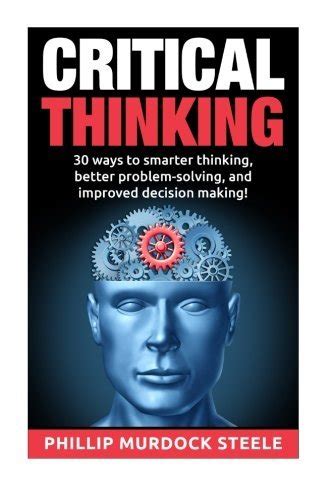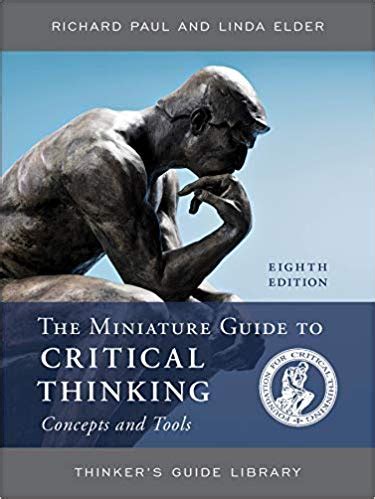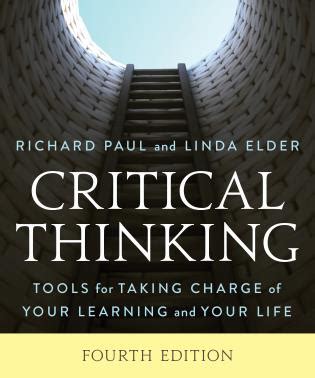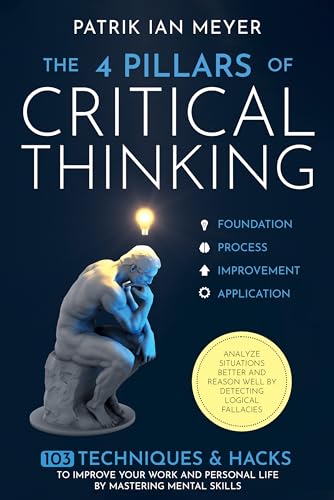Critical thinking is more than just processing information; it’s the ability to analyze, evaluate, and make reasoned decisions. In today’s fast-paced world, developing strong critical thinking skills is essential for navigating complex problems and making informed choices. This comprehensive guide explores the definition and importance of critical thinking, breaking down its core components and how it differs from regular thinking. We will also delve into the role of bias and assumptions, common fallacies, and errors, and provide techniques to enhance your critical thinking abilities. Whether applied in everyday life or in the digital age, mastering critical thinking is key to futur
Join weninsure.xyz as we uncover the details of this topic.
1. Definition and Importance of Critical Thinking
Critical thinking is a structured process that involves actively and skillfully using a range of cognitive tools. These include conceptualizing, analyzing, synthesizing, and evaluating information obtained through observation, experience, reflection, reasoning, or communication. It demands questioning assumptions, identifying potential biases, and rigorously examining evidence before forming conclusions. Unlike everyday thinking, which may rely on intuition or unscrutinized beliefs, critical thinking necessitates a deliberate and systematic approach to problem-solving and decision-making.
Critical thinking is an indispensable skill, empowering individuals to analyze situations objectively and make informed decisions. In today’s information-saturated world, it equips us to navigate vast amounts of data, identify reliable sources, and resist manipulation by false or deceptive information. Cultivating critical thinking fosters open-mindedness, creativity, and the ability to understand diverse perspectives, essential for personal and professional development. By honing these skills, individuals enhance their problem-solving abilities, make well-informed choices, and contribute meaningfully to discussions and decisions across various facets of life.

2. Core Components of Critical Thinking
Critical thinking relies on a set of interconnected skills that enable thorough analysis and sound decision-making. These fundamental components include: observation, interpretation, analysis, evaluation, inference, explanation, and self-regulation.
Observation is the key to starting the critical thinking process. It’s the ability to recognize and pinpoint important information. This first step involves gathering data through different methods, such as reading, listening, or directly observing events.
Interpretation is the process of comprehending and assigning meaning to collected information. It necessitates accurately decoding the intended message and identifying the potential consequences or implications of the data.
Analysis is the process of dissecting complex information into smaller, more understandable pieces. This allows us to see how these parts connect and interact. This process is critical for recognizing patterns, identifying relationships, and uncovering underlying causes.
Evaluation is a vital process that examines the trustworthiness of information and the soundness of arguments. This step plays a crucial role in determining the dependability of sources and the weight of evidence.
Inference is the skill of forming conclusions based on evidence and logical reasoning. This process entails making reasoned deductions and predictions about potential future outcomes.
To explain something effectively, you must articulate your reasoning in a clear and concise manner, enabling others to follow your thought process and grasp your understanding.
Self-regulation is about examining your own biases and assumptions to ensure your thinking remains objective and free from undue influence. These elements are crucial for developing robust critical thinking skills.

3. How Critical Thinking Differs from Regular Thinking
Critical thinking diverges from ordinary thinking in its depth, structure, and purpose. Regular thinking frequently relies on intuition, habitual responses, or superficial analysis, leading to decisions based on immediate perceptions or emotions without thorough examination. It often operates automatically, guided by preconceived notions, and may neglect crucial details or alternative viewpoints.
Critical thinking, on the other hand, is a conscious and organized approach that involves scrutinizing assumptions, evaluating evidence, and exploring diverse perspectives before forming an opinion. It demands a more profound level of cognitive involvement, as the thinker actively endeavors to comprehend the fundamental causes and consequences of a situation. Critical thinkers are more inclined to question their own convictions and those of others, guaranteeing that decisions are well-grounded and rational. This method not only yields more precise and trustworthy results but also cultivates creativity and problem-solving by promoting a deeper investigation of ideas. Consequently, critical thinking elevates decision-making from impulsive responses to deliberate contemplation.

4. The Role of Bias and Assumptions in Critical Thinking
Critical thinking can be significantly hindered by biases and assumptions, which act as barriers to objective analysis and sound decision-making. Biases are preconceived notions or preferences that distort our perception and interpretation of information. These biases can arise from personal experiences, cultural influences, or emotional attachments, leading us to favor certain ideas or outcomes over others without adequate justification. Conversely, assumptions are beliefs or statements taken for granted without evidence. They can subtly influence our reasoning, leading us to overlook alternative explanations or possibilities.
Critical thinking demands a conscious effort to identify and challenge our biases and assumptions. Recognizing their presence helps us understand how they might be shaping our thoughts and decisions. By actively questioning and testing our assumptions, we prevent ourselves from drawing unfounded conclusions and ensure our judgments are based on solid evidence and logical reasoning. This self-awareness and willingness to scrutinize our own thinking are essential for developing a more accurate and unbiased understanding of complex issues. Ultimately, overcoming biases and assumptions strengthens the quality of our critical thinking, leading to more informed and rational decisions.
5. Techniques to Improve Critical Thinking Skills
Sharpening critical thinking skills necessitates sustained practice and the utilization of specific methods aimed at bolstering analytical and evaluative capabilities. One such effective technique involves questioning assumptions—actively challenging the beliefs and ideas that are taken for granted. By scrutinizing the validity of these assumptions, you can uncover hidden biases and cultivate a more balanced perspective.
Regularly engaging in reflective thinking is another crucial technique. This involves taking time to examine your thought processes, decisions, and the resulting outcomes. Through self-reflection, you can pinpoint areas where your reasoning may be faulty or where biases might have skewed your conclusions.
Critical analysis of arguments is essential. To develop this skill, practice dissecting arguments into their core components: claims, evidence, and reasoning. Thoroughly evaluate the strength and validity of each part. This process will enable you to identify logical fallacies and weaknesses in the reasoning presented.
Moreover, pursuing diverse perspectives expands your comprehension by introducing you to a range of viewpoints and confronting your established assumptions. Participating in discussions, exploring a wide array of reading materials, and exchanging thoughts with others can generate novel insights and cultivate more robust critical thinking abilities.
By consistently practicing these techniques, you can greatly improve your critical thinking skills and make more informed decisions.
6. Common Critical Thinking Fallacies and Errors
Flawed reasoning and common fallacies can weaken the strength of arguments and result in incorrect conclusions. One prevalent error is the ad hominem fallacy, where an argument is dismissed based on the person presenting it, instead of evaluating the argument’s validity. This tactic diverts attention from the actual issue and resorts to personal attacks.
Confirmation bias, another prevalent fallacy, occurs when individuals give preference to information aligning with their pre-existing beliefs, while neglecting contradictory evidence. This bias can significantly hinder objectivity and result in distorted interpretations of information.
The false dilemma fallacy presents a situation as having only two possible outcomes when, in reality, more options may exist. This oversimplification can force unnecessary choices and neglect alternative solutions.
Circular reasoning is another critical thinking error, where the conclusion is assumed in the premise, leading to arguments that go in circles without proving anything.
Recognizing and avoiding these fallacies is essential for maintaining logical integrity in critical thinking and ensuring that conclusions are based on sound reasoning and evidence.
7. The Application of Critical Thinking in Everyday Life
Critical thinking is indispensable in daily life, empowering us to make well-informed decisions, solve problems efficiently, and navigate the intricacies of modern society. In personal relationships, critical thinking fosters conflict resolution by encouraging individuals to objectively analyze situations, consider diverse perspectives, and avoid impulsive reactions. By questioning assumptions and scrutinizing evidence, individuals can enhance their communication skills and arrive at equitable, mutually beneficial resolutions.
Critical thinking is a vital asset in the workplace, particularly when it comes to decision-making and problem-solving. From evaluating project feasibility to managing resources and leading teams, critical thinking empowers professionals to carefully consider options, anticipate potential obstacles, and make well-informed, strategic decisions. This skill is especially valuable in fast-paced environments that demand swift action, as it fosters a balance between speed and thoroughness.
Critical thinking is essential for navigating the complexities of consumer behavior. Whether evaluating product claims or making financial decisions, critical thinking empowers individuals to make informed choices that align with their values and goals. In today’s information-saturated environment, where conflicting narratives abound, the ability to critically assess sources and discern between fact and opinion is paramount.
By consistently employing critical thinking in their daily lives, individuals cultivate a clear and rational mindset, empowering them to tackle challenges effectively and achieve positive results across diverse areas of their lives.
8. Critical Thinking in the Digital Age
The digital age demands more critical thinking than ever before. With the abundance of information online, discerning reliable sources from unreliable ones is paramount. While the internet has democratized access to information, it has also fueled the spread of misinformation and biased content. Critical thinkers must remain vigilant, scrutinizing the accuracy and reliability of online information while considering potential biases and underlying agendas.
Social media platforms, in particular, present challenges to critical thinking. They frequently create echo chambers where users primarily encounter viewpoints that align with their existing beliefs. This environment can amplify confirmation bias, making it difficult to objectively consider diverse perspectives.
Furthermore, in this digital age, individuals must acquire the ability to navigate the intricate world of information, where context is easily obscured and data can be readily manipulated. By employing critical thinking online, individuals can make more informed choices, participate in meaningful discussions, and resist the manipulation of their perceptions and beliefs.
9. The Future of Critical Thinking Education
The evolving demands of a digital and globalized world are driving the future of critical thinking education. With information readily available, the importance of teaching critical thinking skills in educational institutions will become increasingly crucial. Schools and universities must integrate critical thinking across all subjects, empowering students to question, analyze, and evaluate information from diverse perspectives.
Technology will be crucial in driving this evolution. Digital tools and platforms can create engaging and tailored learning experiences, fostering the development and refinement of critical thinking skills. Online courses, simulations, and AI-powered assessments offer real-time feedback, enabling learners to identify biases, recognize logical fallacies, and enhance their reasoning abilities.
Furthermore, critical thinking education is poised to embrace interdisciplinary learning more fully. This approach will challenge students to apply their critical thinking skills to intricate, real-world problems that demand a fusion of knowledge from various disciplines. By cultivating these abilities, educational systems will empower students to confidently and clearly face the challenges of the 21st century, navigating a world marked by constant change.
Critical thinking is a vital skill for navigating the complexities of modern life. By understanding its core components, recognizing common fallacies, and applying it in everyday situations, individuals can make more informed decisions and solve problems more effectively. As education evolves to meet the demands of the digital age, fostering critical thinking will be key to empowering future generations to think critically and act wisely.
weninsure.xyz

